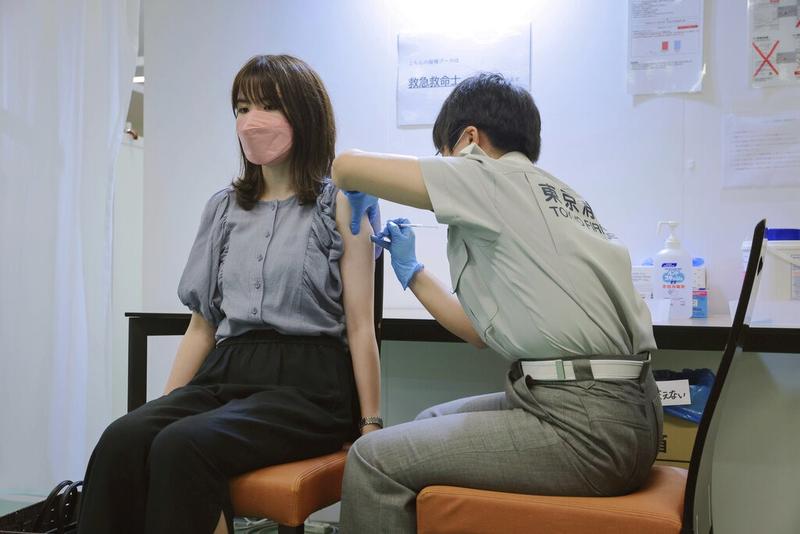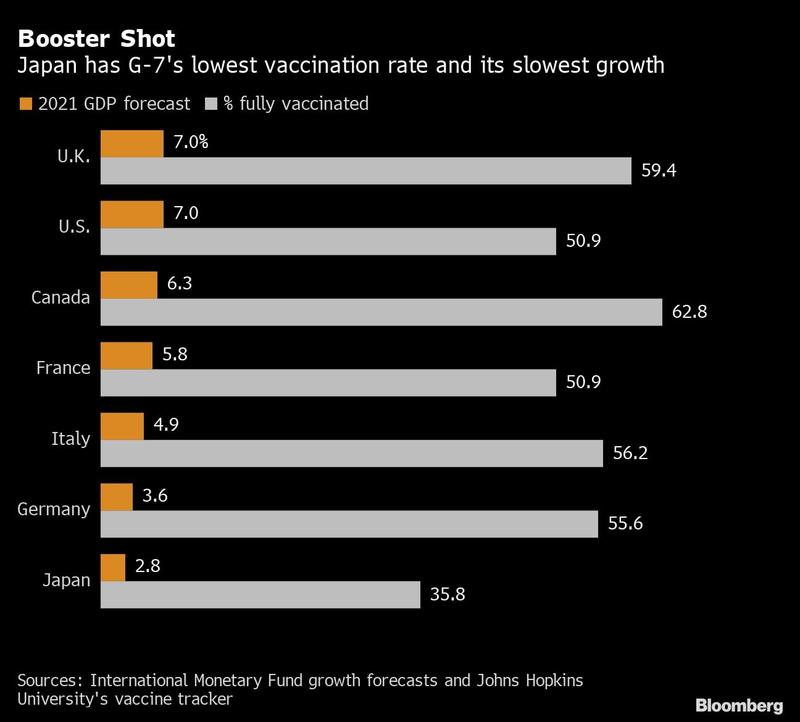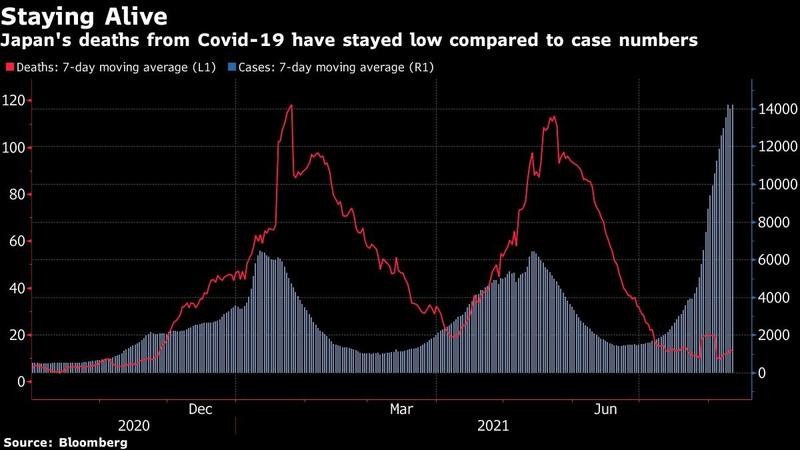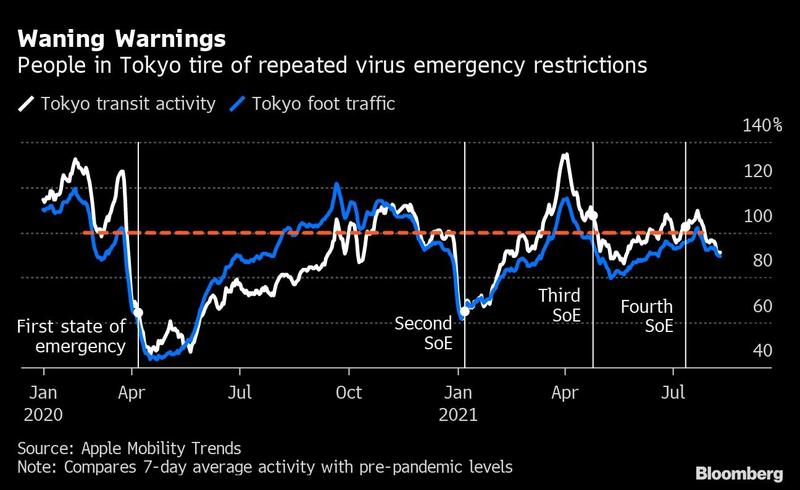 A student receives a shot of the Pfizer COVID-19 vaccine by Tokyo Fire Department staff at the Tokyo Vaccination Center at Aoyama Gakuin University in Tokyo on Aug 2, 2021. (STANISLAV KOGIKU / POOL PHOTO VIA AP)
A student receives a shot of the Pfizer COVID-19 vaccine by Tokyo Fire Department staff at the Tokyo Vaccination Center at Aoyama Gakuin University in Tokyo on Aug 2, 2021. (STANISLAV KOGIKU / POOL PHOTO VIA AP)
It seems like Japan’s big recovery is always a quarter away.
That dynamic is playing out again ahead of gross domestic product figures due Monday. Economists expect Japan to have just managed to eke out growth in the three months through June, but the more robust recovery they once saw for this summer now looks certain to be delayed.
The slowest vaccine drive among the Group of Seven nations is a key reason. With infections rising to record levels in recent days and the government’s fourth state of emergency already extended to the end of August, the bounce in consumer spending that analysts had been forecasting will have to wait even longer.

Prime Minister Yoshihide Suga is aiming to get 40 percent of the country vaccinated by the end of the month, but analysts say shoppers won’t start to splash out until the country achieves a much higher rate
Ongoing restrictions to curb the virus, needed because only about a third of Japan’s population has been vaccinated, has earned Japan the dubious distinction of being the only G-7 economy to have its growth outlook for this year cut by the International Monetary Fund.
In recent days, a Delta-driven wave of the virus has pushed Japan’s daily caseload to double previous peaks, but the reality isn’t quite as bad as it may look.
Although the number of people in serious condition is rising, there have been far fewer deaths so far than during earlier waves because the vast majority of Japan’s seniors have now gotten their shots. The country of 125 million people had nine virus-related fatalities Wednesday, compared with more than 360 in the US, where a smaller percentage of people 65 and over are fully vaccinated, despite a higher rate across all age groups.
ALSO READ: vJapan vaccine effort hits logistic bottlenecks ahead of Olympics

The problem is that the government hasn’t given a clear signal about what vaccination rate will enable what specific economic activities to resume. So people don’t see the incentive to get vaccinated.
Harumi Taguchi, economist at IHS Markit
Still, Japan is caught in a kind of stalemate in its fight with the virus. With each new declaration of emergency, people are paying less and less attention. Foot traffic at train stations is up and many bars and restaurants are openly flouting government requests to close early.
The result is that consumer spending has leveled out and the country is likely to have averted recession, but the recovery is stuck on hold until the virus can be brought to heel. It’s a typical outcome for Japan’s economy: not disastrous, but not marvelous, either.
With calls for caution losing their effectiveness, it seems Japan’s government is simply counting on the shots to change the picture. Prime Minister Yoshihide Suga is aiming to get 40 percent of the country vaccinated by the end of the month, but analysts say shoppers won’t start to splash out until the country achieves a much higher rate.

Economist Harumi Taguchi at IHS Markit expects consumption to clearly recover only when 60 percent of the population is fully vaccinated, sometime in October or November, she estimates.
READ MORE: A bitter vaccine history means hurdles for Japan's COVID-19 fight
“We will see pent-up demand come out clearly in the fourth quarter,” Taguchi said. “The problem is that the government hasn’t given a clear signal about what vaccination rate will enable what specific economic activities to resume. So people don’t see the incentive to get vaccinated.”


